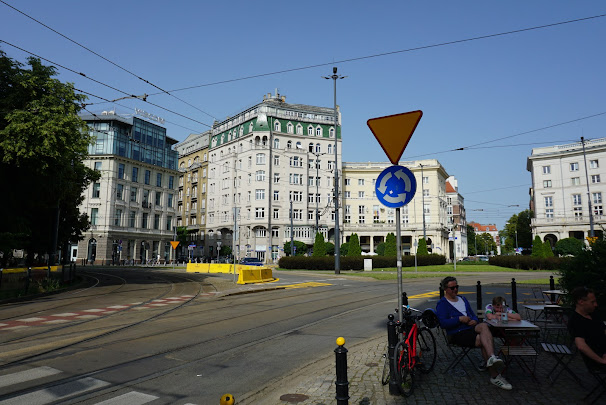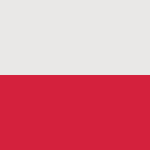Politechnika
#Warsaw tour guide #Warsaw city guide # guided tour in warsaw #Warszawa tour guide #Warszawa city guide #guided tour in Warszawa
At Metro Politechnika, we are still in a vibrant centre. Here we find roads, bars, restaurants, parks, local residents and large institutions. It is one of the most popular residential areas in the city, close to everything, but away from the slightly museum-like feeling you can have in the rebuilt medieval city, and also there are not as many tourists here as in the city centre, although there is no shortage of young people ready to organize a party anytime.
Close up

One end of the metro station is next to the huge Pole Mokotowski Park, while the other end is situated next to the buildings around the Technical University
You come up from the metro at the main streets Waryńskiego and Aleja Armii Ludowej (the People’s Army street). From here there is direct access to the huge park, Pole Mokotowskie, which is described under the metro station Pole Mokotowskie.
Two important places to visit within 150 meters are Plac Zbawiciela and Plac Politechniki – both round squares with a typical construction in the form of six star-shaped streets leading to and from the squares.
If you continue to Nowowiejska street, you can turn right to get to Plac Zbawiciela and left to get to Plac Politechniki.

Technical University
Plac Politechniki is dominated by the Technical University’s monumental main building from 1901, with a clear touch of Italian Renaissance and Baroque. The building was seriously damaged during WWII, but rebuilt immediately after the war. However, the building is even more interesting inside, so pretend you are a student and ascend the stairs; from the balcony you can see the colonnaded hall, that lead to the different parts of the building. It simply makes you want to become an engineer.

Inside the Technical University
The surrounding area is dominated by buildings belonging to the Technical University, but if you walk through one of the six streets that lead to the square, you will come across lots of pre-war housing, which was only partially damaged and which today, by and large, is newly renovated.

Plac Zbawiciela. You will find different bars and restaurants all over
Plac Zbawiciela is the joyful meeting place for the city’s youth. The genuine socialist Stalin-style building is flanked by the Church of Our Savior (Kościół Najświętszego Zbawiciela) from 1911, which, like the nearby Technical University, is inspired by Renaissance and Baroque and is characterized by an enormous wealth of detail.

The opening of Charlotte in 2011 represents a symbolic turning point for me – it is no longer just the rich who enjoy the luxury of the capital. A large new group realizes, that it is cool to sip a glass of wine and delicious bread.
The huge amount of bars and pubs includes the legendary Plan B on the first floor level or Charlotte, which in 2011 became the first exclusive bakery and bistro in Warsaw. Since then, the trick has been copied all over Warsaw. Charlotte’s slogan is “bread and wine”, while Plan B markets itself with “vodka and beer”
The centre of the square is now empty with a lawn and a small tree, but by the locals the centre is remembered for a rainbow, which symbolized the capital’s diversity. After being burned down several times by nationalist activists, the installation was removed in 2015, but the Rainbow is still remembered as a symbol of the square.

Marszałkowska Street – flats for the working people … and the working people built in the columns
Again, the square’s six streets offer the opportunity to explore – through Marszałkowska (on both sides), which is dominated by Stalin’s Real Socialism style from the 1950s, or through Mokotowska (also on both sides), which is an exclusive street characterized by impressive pre-war architecture. Aleja Wyzwolenia will take you to Plac na Rozdrożu, and from there to the parks Uzajdowski, Botanical Garden and Łazienki.


Plac Konstytucji (Constitution Square)
Plac Konstytucji (Constitution Square) and Marszałkowska Street (5-6 minutes from Waryński Street) – a classic example of Stalin’s favourite building style – real socialism. The entire area was completed in 1953, the same year the new communist constitution came into force.

The small streets

The small streets – Koszykowa, Mokotowska, Aleja Róż. Not all the buildings have been renovated. On the other hand, you soon find out that it is pure nonsense that all of Warsaw was destroyed during World War II.
It is also worth taking a walk into the small streets around the square, that contain lots of well-maintained houses from before WWII and also a very special atmosphere.

In recent years, however, many buildings have undergone extensive renovation
Longer walks

Food hall and shopping centre Koszyki 61/63. From the Constitution Square (Plac Konstytucji) you turn left to Koszykowa street.
Market hall from 1909, which after many years as a ruin has now been restored. It’s an exciting retro mall and one of the more exclusive shopping locations in the city centre. Elements of the old hall are used in the new raw concrete construction, creating a cool microclimate with shops, bars and restaurants. It is one of Warsaw’s most exciting food halls, with a hugely varied range of street food.

Hala Koszyki – inside
A fifteen-minute walk or longer
Trasa Łazienkowska (Plac na Rozdrożu)

The huge fountain on Plac na Rozdrożu
One of the huge east-west main roads in Warsaw. Read more under “Communism in Warsaw”.
The parks Uzajdowski, Botanical Garden and Łazienki

The view from Qchnia Artystyczna (terrace view)
Opposite Plac na Rozdrożu, on both sides of the main street we find Park Ujazdowski – a landscape park from 1896 with a lake and a number of statues. The park looks very impressive from the Ujazdowski Castle (Zamek Ujazdowski, address: Jazdów 2), where there is a view of the entire park, which is rich in details and reaches right down to the river. The Ujazdowski Castle includes the Centre for Modern Art. Read more under “Art in Warsaw. In the front part of the castle is the Qchnia Artystyczna (Artistic Kitchen) restaurant, which offers experimental cuisine and a fantastic view of the park.
Immediately next to the Ujazdowski Park is the Warsaw Botanical Garden (Ogród Botaniczny), which belongs to the University of Warsaw.
The last park in the row of parks is the Łazienki park, which compresses the entire romantic character of Warsaw. Read more about the Łazienki Park under “Forests and parks in Warsaw”.
It is located right next to the centre of power – that is, opposite the Prime Minister’s Chancellery on Aleje Ujazdowskie, next to Belweder, which is the residence of the Polish President. Further down the street you can see the Ministry of Defence and the Russian Embassy. More under “Warsaw as the centre of the Polish state”.

Please send an email to m@hardenfelt.pl if you would like an English-speaking tour guide to show you the most important places in Warsaw.
